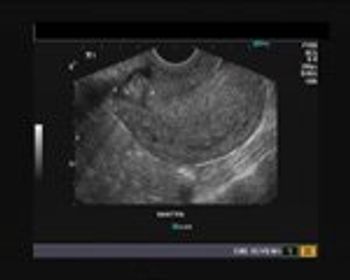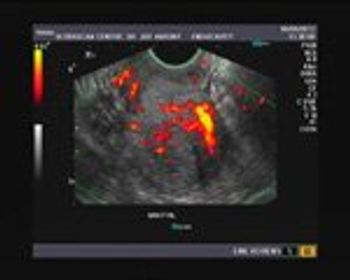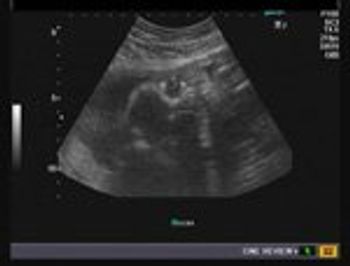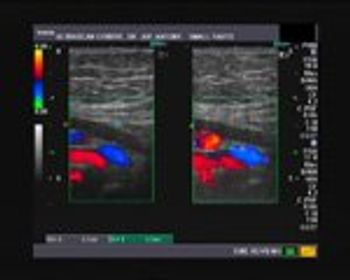
Pregnant women with low serum 25(OH)-vitamin D concentrations (≤46 nmol/L) are more than twice as likely as those with levels ?72 nmol/L to have a child whose language development is impaired.

Pregnant women with low serum 25(OH)-vitamin D concentrations (≤46 nmol/L) are more than twice as likely as those with levels ?72 nmol/L to have a child whose language development is impaired.

Women feel pain more intensely than men across a number of diseases, including diabetes, arthritis and certain respiratory infections, according to a study of gender differences in self-reported pain.

This is our LSCS patient, post-op. Currently, she has a history of pain in the lower abdomen and pelvis with scanty discharge from wound site.

Over the past few years, there has been great concern over the presence of alkyl esters of p-hydroxybenzoic acid (parabens) in consumer products and their link to breast cancer. These compounds have been found in human blood, milk, urine, and breast tissue.

Kevin Giordano, Esq. and John O’Grady, MD, examine two laparoscopic hysterectomies that resulted in occult ureteric injury.Is it possible that the same event might be considered the standard of practice in one case but not the other?

ACOG has issued recommendations to improve care for American Indian and Alaska Native women.

Statin use in postmenopausal women is associated with an increased risk of new-onset diabetes mellitus, according to a new study published in the Archives of Internal Medicine.

Our patient presents with a history of 5 weeks of amenorrhoea and scanty bleeding per vagina. Based on her history and ultrasound images, what is your diagnosis?

This is a 30 year old female with polymenorrhea with dysmenorrhoea. What do the ultrasound images show?

Findings published in the latest issue of Cancer Prevention Research suggest that antiestrogen supplements help decrease the risk of subsequent melanoma in patients with breast cancer.

Is the concept of an “accepted complication”-or the identified limitations of medical science-a shield to malpractice claims? Kevin Giordano, Esq. and John O’Grady, MD, explore liability risks of diagnostic laparoscopy.

Although previous studies of a new genital herpes vaccine were encouraging, it failed to protect women in a recent large clinical trial.

Many private practice obgyn's are feeling the pinch of the current economy. Some of them are selling their practice or filing bankruptcy. Who is to blame for this state of affair?

As a gynecological oncologist, I often see patients who want to be tested for cancer because a close family member has just been diagnosed. Understandably, they want to be sure they don’t have it.

Gestational diabetes is a serious concern in pregnancy for both the fetus and mother. In this educational tutorial, review the epidemiology, classification, pathogenesis of glucose intolerance, consequences for mother and fetus, fetal evaluation, screening and more.

Two new studies published in the New England Journal of Medicine point to the importance of using bevacizumab in the treatment of ovarian cancer. Bevacizumab, a recombinant humanized monoclonal antibody directed against the vascular endothelial growth factor, has shown single-agent activity in women with recurrent tumors.

Women with diabetes can bring a host of medical complications to their pregnancy. Recently, research has shown that cesarean section rates are higher in women with diabetes, and some estimates note that more than half of those C-sections are emergency operations and not elective procedures.

These are ultrasound images from a normal 3rd trimester fetus. What fetal anatomy do you see?

It used to be that the only way to get new clinical material was to purchase textbooks. Today you can use your iPad, Kindle, or on-line subscriptions to medical journals.

Endometriosis affects as many as 6% of the general population. While some women with endometriosis remain asymptomatic, many women experience dysmenorrhea, dyspareunia, non-cyclical pelvic pain, and subfertility. Now, new research indicates that patients with endometriosis are also more likely to develop inflammatory bowel disease.

Since the debate about the safety of hormone replacement therapy began, researchers, patients, and clinicians have searched for a safe alternative to help alleviate the symptoms associated with menopause. Now, a small study in Italy suggests that dehydroepiandrosterone (DHEA) may be a solution.

Synopsis: In this protocol, Dr. Catalano reviews the pathophysiology, diagnosis, prevention, and treatment of obesity in pregnancy. Included are guidelines for avoiding obesity-related complications in pregnancy, notes on postpartum follow-up, and a list of seminal reports in this subject area. As the author notes, pregnancy offers a woman the unique opportunity to affect her long-term health and that of her offspring. The ultimate treatment of obesity during pregnancy lies in preventing further weight gain. This can be achieved by avoiding excessive weight gain during pregnancy and implementing lifestyle measures to attain a more normal body mass index (BMI) prior to the next pregnancy. Based on preliminary evidence, achieving these measures also may have both short- and long-term benefits for the offspring.

The offspring of women who receive inhaled glucocorticoid medications to treat asthma during pregnancy may have a significantly increased risk of endocrine and metabolic disorders, according to a population-based cohort study published in the American Journal of Respiratory and Critical Care Medicine.

Decreases in bone mineral density and an increased risk of arthritis may be linked to bilateral oophorectomy, according to new research presented at the 2011 CTRC-AACR San Antonio Breast Cancer Symposium.

Acute-onset hypertension lasting 15 minutes or longer in women with preeclampsia or eclampsia is a hypertensive emergency that requires antihypertensive treatment, according to a new Committee Opinion of The American College of Obstetricians and Gynecologists (The College).

In further response to the Safety Communication issued by the FDA in July 2011 regarding the use of vaginal mesh, the American College of Obstetricians and Gynecologists (The College) and the American Urogynecologic Society (AUGS) jointly state that the use of vaginal placement of synthetic mesh for the treatment of pelvic organ prolapse (POP) should be reserved for high-risk women for whom the benefits may outweigh the risks.

The first line of therapy for treating psoriasis in pregnant and breastfeeding women should be topical treatment with moisturizers and emollients, such as petroleum jelly, because these products cause no known adverse effects.

Pregnancy may be complicated by diabetes in two distinct forms: Gestational diabetes mellitus and Pre-gestational diabetes. This educational tutorial goes over classification, screening tests, risk factors, the effects of diabetes and more.

Lymphedema, swelling caused by a blockage in the lymphatic system, can occur as a result of surgical or radiation therapy associated with breast cancer treatment. Since some research has shown that exercise after breast cancer treatment has been associated with developing lymphedema, clinicians often advise patients to avoid exercising. But is this truly necessary?

These ultrasound images show right hydroureter with hydronephrosis. What else do you see and what is the cause?